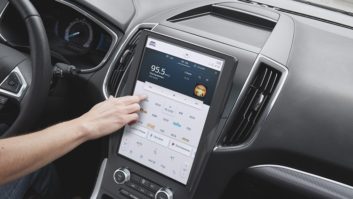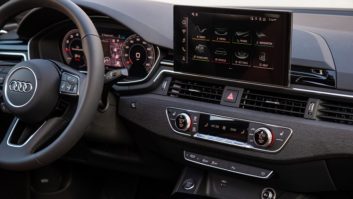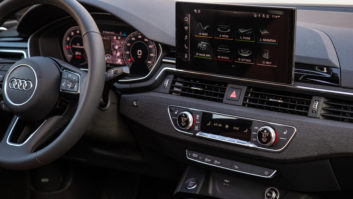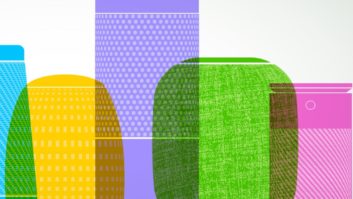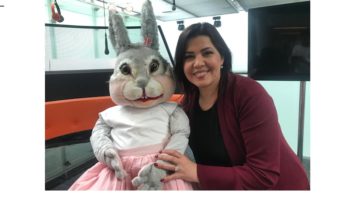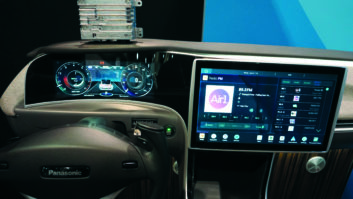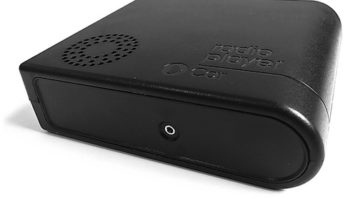Radioplayer, the collaboration between the BBC and commercial radio in the UK, recently announced a new product, Radioplayer Car.
The UK has a multi-platform radio environment, driven by a number of different market conditions. The UK’s radio measurement system, RAJAR, measures cross-platform: meaning that a listener counts whether they listen using FM, DAB or the internet.
While music licensing costs radio stations over 10% of qualifying revenue � some of the highest figures in the world � this means that internet simulcasts within the UK come at no extra charge.
The UK�s DAB network offers around three times the choice of FM, from established broadcasters, and better quality than AM signals. Coverage is well over 90% of the population and is installed in over 80% of new vehicles in the UK, but the majority of cars do not have it installed.
Bearing in mind the above, Radioplayer Car seeks to make a better car radio for the UK’s multi-platform listener.
The device is a small black box which is fitted behind the radio dashboard. It comes with a DAB antenna and a Bluetooth connection to an iPhone or Android device, which allows the listener to control it.
“The first thing we did is to ensure that it was easy and safe to use,” said Managing Director Michael Hill. �So we made Radioplayer Car voice-controlled, and speech-enabled [the system speaks the name of the station it�s switching to]. It was critical to us that the driver could change stations without touching their phone, or taking their eyes off the road. We challenged ourselves to make Radioplayer Car safer and simpler to use than an old FM radio.�
The first challenge is that radio stations aren�t always known by their official name. In Radioplayer�s tests, many listeners wanted to tune into BBC Radio 1 by simply saying �Radio 1�, as one example. Radioplayer worked on additional pieces of metadata to ensure that popular names worked as well as the official ones.
Radioplayer also produced phonetic names for each station, so that they were pronounced correctly. �Wave 105� is, of course, pronounced �one-oh-five� and not �one hundred and five.�
�We take a lot of this for granted,� said Hill, �but we realized it was a lot of additional work to make this work well. We�ve learnt from our experience with the Amazon Alexa device, where we were a launch partner in the UK.�
Radioplayer Car�s real achievement, however, is in something less sexy � or marketable � than voice control: hybrid tuning.
�We wanted to make sure that this radio just worked,� Hill said, �and that meant hiding the complication of FM, DAB or Internet. The radio tunes into the best signal for the listener, automatically. You don�t need to know frequencies or multiplex blocks – it just works.�
A listener to a London station, for example, might start by listening on DAB or FM. Then, when the signal begins to fade, the unit will automatically switch the listener to their internet stream: and then back to broadcast radio again when the signal returns.
The unit has four tuners � two FM, two DAB � which are constantly scanning for stations, and reporting what they find to a central microprocessor.�We have a complete and regularly-updated database of the broadcast parameters for radio stations,� explained Michael Hill. �The radio is constantly checking the FM RDS or DAB signals, and comparing them against our data. We use bearerURIs – the available broadcast information of an FM frequency and the PI code in its RDS signal, for example – to be able to know what station it is.�
The bearerURI specification Radioplayer Car uses is part of ETSI 103 270 � the hybrid radio lookup used by RadioDNS. Radioplayer Car�s implementation doesn�t use RadioDNS�s XPI data in the UK, since it gets data directly from Radioplayer stations, but it could if it were rolled out in other countries.
�We�ve worked on the algorithm for switching listeners from broadcast to IP and back again – since we know that won�t always be seamless,� added Hill. �We tend to switch to IP and stay there until we�ve monitored at least two minutes of good broadcast reception in the background, before switching the listener back. That should minimize the amount of switches they might hear.�
There�s a whole area of science around switching, called �Hysterisis,� but in the real world there�s no substitute for road-testing. The Radioplayer team have covered many hundreds of miles, to fine-tune the algorithm that detects a fading signal, and judges when to switch to a better one. �
Radioplayer Car also has integration with text messages and real-time traffic information, which are also controllable by voice.
�This project has taught us a huge amount about hybrid radio, and we�re e sharing our learnings with car manufacturers,� said Hill, �because our aim is to make a better radio for everyone. We�re also opening our metadata API to manufacturers so they can use it to power their own hybrid interfaces. We know that radio is the most listened-to audio source in the car: but also that it needs to be simple to use.�
Radioplayer Car is now available: the price includes installation.
�
�






